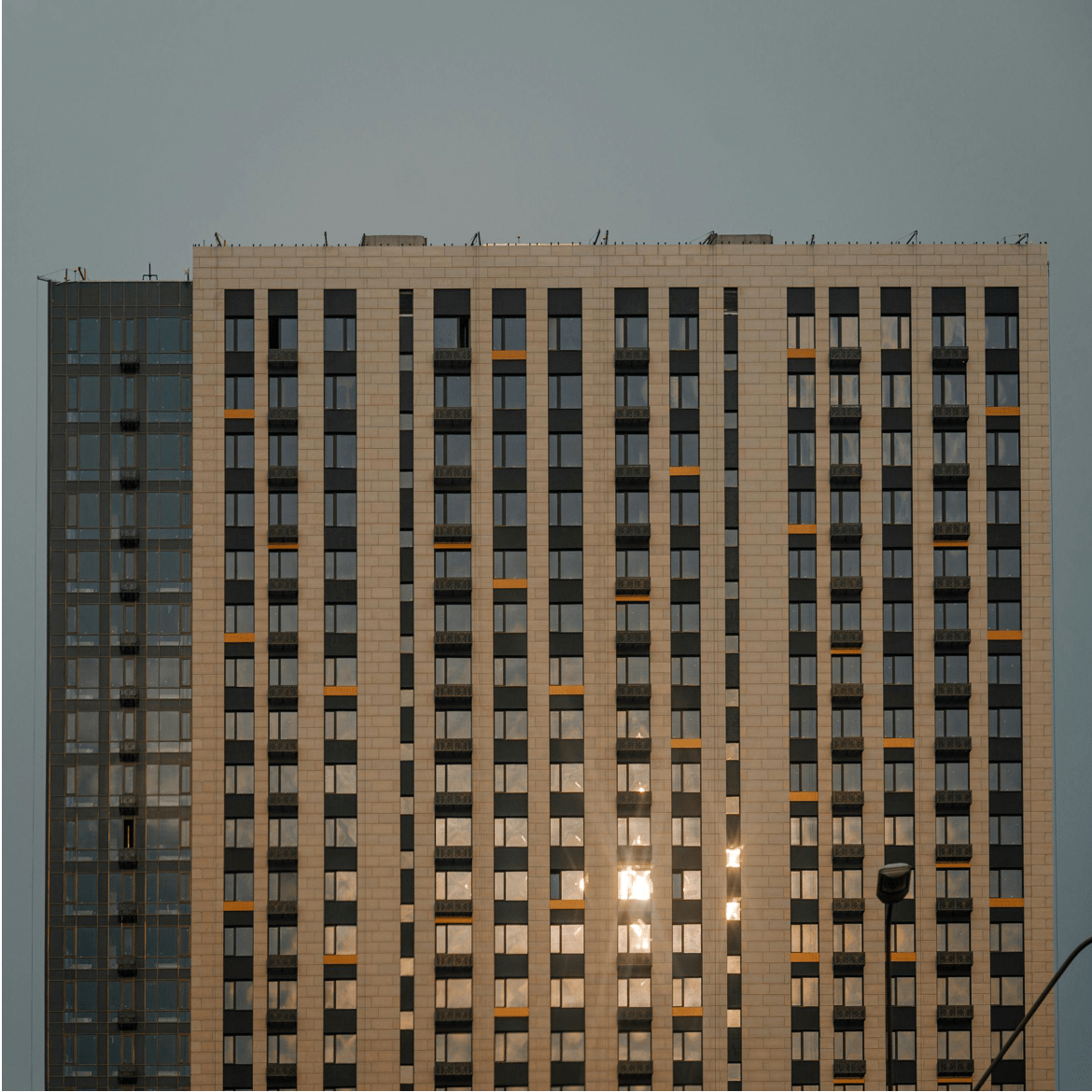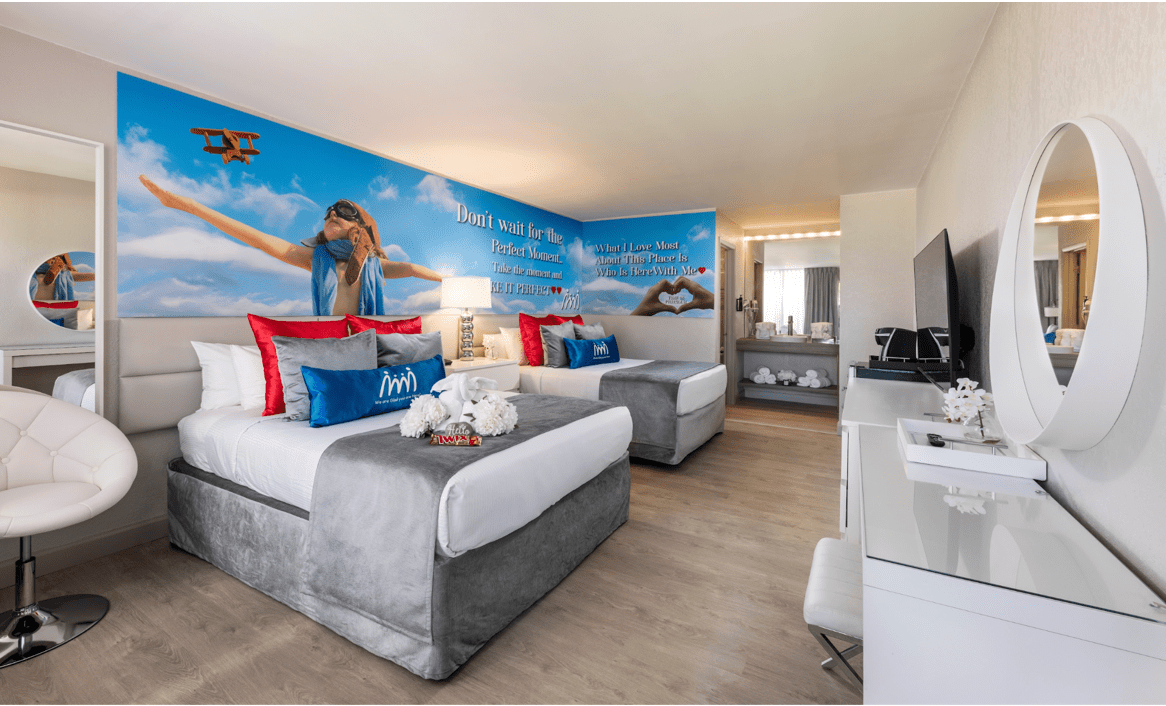Lifestyle
Commercial and Industrial Lighting Solutions: A Bright Future with LEDLightExpert

Today, conserving the planet’s dwindling resources is more critical than ever, but many commercial buildings still waste approximately 30% of the energy they consume. Fortunately, the emergence of LED lighting equips these businesses with a powerful way to improve operations while reducing overhead costs.
“Our mission is to provide sustainable lighting solutions that reduce energy consumption and lower the carbon footprint of commercial and industrial operations,” says Dara Greaney, CEO of LEDLightExpert.com. “LED lighting is a huge leap forward in technology. It offers outstanding benefits both for businesses and for the planet.”
Why LED lighting is the sustainable choice for commercial and industrial applications
Traditional lighting solutions like incandescent and halogen lamps convert much of the energy they consume into heat, making them hot to the touch. In contrast, LEDs generate minimal heat and use most of their energy to produce light, making them far more efficient and reducing a building’s cooling load.
Thanks to their efficiency, LEDs use approximately 75% less energy than their incandescent counterparts. For large commercial and industrial spaces requiring extensive lighting, energy efficiency translates into substantial cost savings. The energy bills of facilities operating on a 24/7 schedule, such as warehouses and manufacturing plants, stand to benefit the most.
A positive review from an LEDLightExpert customer states, “The 52-500, 100-watt LED flood lights we ordered were heavy-duty, sealed for exterior use, and had 50% more lumens than the 100-watt lights they replaced.”
LEDs also boast an impressive lifespan. Because LED bulbs last up to 25 times longer than traditional incandescent bulbs, customers can expect fewer replacements and lower maintenance costs.
Whereas traditional lighting options might need to be replaced every few months or years, LED lights last for decades with minimal maintenance. This longevity is crucial in industrial environments where accessing light fixtures can be challenging and costly.
In a recent review, another satisfied LEDLightExpert customer reports, “We have used these 150w LEDs to retrofit 62 400w metal halide lights in our church parking lot. I just ordered the last [five] needed to complete this project. The original LED lights have been in for over a year with not one issue. Great product […] great customer service!”
LED bulbs are an all-around boon for the environment. By consuming less energy, they lower greenhouse gas emissions and contribute to a smaller carbon footprint. Their long lifespan also reduces waste and the overall impact on landfills.
Finally, unlike fluorescent lighting, which contains hazardous substances like mercury, LEDs are non-toxic and do not require special disposal procedures. This makes them a safer and more eco-friendly option for businesses looking to enhance their sustainability practices.
LED lighting offers improved lighting quality
It turns out that LED bulbs benefit people as well as the planet. Advanced LED features such as dimming capabilities, smart controls, and motion sensors allow businesses to tailor lighting systems to a range of needs and conditions.
Additionally, the wide range of cool and warm lighting options available from LED bulbs enables businesses to optimize comfort with the most natural lighting possible. Studies confirm that well-lit workplaces lead to increased productivity, health, and job satisfaction for employees.
“The brightness, clarity, and consistency of LED lights ensure safer and more productive work environments,” Greaney notes. “At LEDLightExpert, we are dedicated to lighting solutions that enhance visibility and make the workplace a more enjoyable place to be.”
LEDLightExpert: Leading the way in commercial and industrial lighting
LEDLightExpert has made a name for itself in the realm of commercial and industrial lighting, and its commitment to quality and innovation is evident in its comprehensive product offerings. The brand’s high bay LED lights deliver bright and consistent lighting even in rooms with high ceilings and expansive spaces, making them ideal choices for warehouses, manufacturing facilities, and gymnasiums, providing powerful and efficient illumination. The high bay lights ensure every corner of the facility is well-lit, enhancing both safety and productivity.
For these unique applications, LEDLightExpert offers several options. First, named for their characteristic circular shape, UFO Style High Bay lights provide broad and efficient illumination. Designed for maximum efficiency and minimal maintenance, their innovative design ensures an even distribution of light across expansive areas such as factories and storage facilities.
Next, featuring long LED tubes, Linear Style High Bay lights are known for their energy efficiency and high lumen output. They are perfect for spaces with ceiling heights ranging from 15 to 30 feet.
Finally, for spaces that need 360-degree lighting, LED Corn Bulbs from LEDLightExpert present an ideal solution. These bulbs, shaped like an ear of corn with multiple LED chips installed on all sides, are excellent replacements for traditional metal halides, high-pressure sodium lamps, and CFL bulbs. They offer a cost-effective path to upgrade lighting systems by enabling businesses to retrofit current fixtures to LED without considerable infrastructure changes.
Safety and security are a top concern in industrial and outdoor commercial settings. LEDLightExpert offers commercial LED floodlights that illuminate vast areas such as parking lots, building façades, and construction sites with bright and consistent lighting that enhances visibility and deters potential security threats. Their durable design withstands harsh weather conditions while providing maximum visibility.
For outdoor perimeters, LEDLightExpert’s Industrial LED Wall Packs are another excellent lighting option. These fixtures provide powerful lighting that enhances security and aesthetics at the same time.
LEDLightExpert’s street and parking lot lights are well-suited for municipal and commercial applications, ensuring well-lit paths and parking areas. Their design focuses on both performance and energy savings, improving public safety with reliable, bright lighting.
“Our lineup of LED products meets the wide range of needs expressed by our commercial and industrial clients,” explains Greaney. “From high-wattage flood lights to customizable lighting solutions, we are constantly innovating to bring the latest LED technology to our customers. With LED, the benefits are clear, the products outstanding, and the future undeniably bright.”
Lifestyle
How Magic Moment Resort Became the Pioneer of a New Era: The First-Ever Dazzler Select by Wyndham

In Central Florida’s packed landscape of family hotels and theme park lodgings, a unique kind of property has emerged. Magic Moment Resort & Kids Club in Orlando is earning attention from traveling families for a simple reason. It delivers joy, warmth, and convenience at a smart value that keeps Disney dreams accessible rather than overwhelming.
By joining Wyndham, Magic Moment Resort unlocks the strength of a global powerhouse, gaining worldwide visibility, advanced technology, and access to Wyndham Rewards, the largest hotel loyalty program on the planet. This strategic move expands its reach, builds guest trust, and amplifies its impact, all while preserving the unique identity that sets it apart.
Just a short drive from the gates of Walt Disney World, the resort sits along the palm-framed stretch of West Irlo Bronson Memorial Highway. The location has long been known for its tourism bustle, yet Magic Moment has carved out a softer identity. It feels playful and colorful, but also intentional. It is designed by a family for other families, and that perspective shapes every experience on the property.
A Philosophy Rooted in Family Connection
Magic Moment Resort was built with a belief often forgotten in today’s tourism industry. Family vacations should feel uplifting instead of stressful, and affordability should not come at the expense of comfort or creativity.
Check-in feels more personal than transactional. Parents arrive with strollers, snacks, and tired children. The staff seems to understand this rhythm instinctively. The energy is warm, the pace is easy, and the tone is set long before anyone even enters the room.
Unlike competing hotels that charge a steep premium for proximity to the parks, Magic Moment focuses on smart value without compromise. Its pricing strategy is refreshingly straightforward. Families can stay five minutes from Disney without draining their travel budgets. For many guests, that difference helps shift resources from hotel costs to experiences. It means more character breakfasts, more souvenirs, and more freedom to enjoy the parks without financial tension following every decision.
Spaces Designed for Children and Considerate of Parents
Magic Moment is filled with color, but nothing feels overstimulating. Instead, the resort offers a sense of wonder scaled to a child’s imagination.
The themed family rooms are a highlight. Children step into rooms that feel lighthearted and whimsical, yet parents appreciate that they are also functional and comfortable. It is the atmosphere of a themed suite without the theme park price.
Its Kids Club and Teens Club reflect that same thoughtful balance. These spaces invite exploration and creativity for children and provide a nurturing level of supervision. Parents can enjoy an hour by the heated pool, relax in a shaded cabana, or simply take a quiet moment while knowing their children are safe and engaged.
The resort’s grounds encourage slow mornings and gentle afternoons.There’s a 30,000 sqf outdoor playground as well as peaceful corners for parents. Importantly, families are not asked to pay additional fees to enjoy them. Magic Moment’s amenities feel generous rather than transactional.
Unforgettable Days at the Parks
For families navigating a Disney vacation, convenience is often the true luxury. Magic Moment delivers this with a complimentary delicious hot breakfast that encourages everyone to sit and enjoy the start of the day rather than rush through it.
Transportation to the parks is included, which removes one of the most common stress points for visiting families. There is no parking lot maze and no long lines at the toll booths. Guests simply board the shuttle and begin their day with ease.
When the sun sets and everyone returns from a day of rides and parades, the resort becomes a place to unwind. Children head straight for the pool. Parents sip Starbucks coffee. The atmosphere is relaxed and bright, and the resort feels like an extension of the Disney experience rather than a pause from it.
A Value That Resonates with Families
What truly elevates Magic Moment is the balance it achieves between smart value and experience. The resort has cultivated a loyal following because guests feel they receive more than they pay for. More thoughtful design. More space for connection. More comfort without excess.
Affordability here does not signal minimalism. Instead, it allows families to breathe. It creates space for shared moments that are often overlooked in the rush of theme-park vacations. Children play freely. Parents unwind without guilt. Families spend more time together and less time navigating logistics.
A Resort Built with Heart
Magic Moment Resort & Kids Club stands out in a region overflowing with hospitality options. Its charm is not rooted in extravagance. It is grounded in sincerity. It reflects the belief that family travel should feel joyful, accessible, and full of color.
For families planning a Disney visit, it represents more than a place to sleep. It is a retreat where memories can form in the quiet moments as much as in the thrilling ones.
At Magic Moment, the greatest luxury is not an amenity. It is the feeling of being exactly where you are meant to be, together.
-

 Tech5 years ago
Tech5 years agoEffuel Reviews (2021) – Effuel ECO OBD2 Saves Fuel, and Reduce Gas Cost? Effuel Customer Reviews
-

 Tech6 years ago
Tech6 years agoBosch Power Tools India Launches ‘Cordless Matlab Bosch’ Campaign to Demonstrate the Power of Cordless
-

 Lifestyle6 years ago
Lifestyle6 years agoCatholic Cases App brings Church’s Moral Teachings to Androids and iPhones
-

 Lifestyle5 years ago
Lifestyle5 years agoEast Side Hype x Billionaire Boys Club. Hottest New Streetwear Releases in Utah.
-

 Tech7 years ago
Tech7 years agoCloud Buyers & Investors to Profit in the Future
-

 Lifestyle5 years ago
Lifestyle5 years agoThe Midas of Cosmetic Dermatology: Dr. Simon Ourian
-

 Health7 years ago
Health7 years agoCBDistillery Review: Is it a scam?
-

 Entertainment6 years ago
Entertainment6 years agoAvengers Endgame now Available on 123Movies for Download & Streaming for Free
